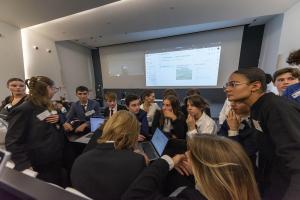A United Nations plenary in the ITER amphitheatre
There are of course some theatrics when smartly dressed 16-year-olds perform as ambassadors to the UN. But there is a purpose here: "It is important that our students get acquainted with the codes and manners of international civil servants, and remain courteous even when disagreeing or opposing."
In the ITER amphitheatre last week, UN protocols and procedures were strictly observed, with the exception of one: students were required to deliver their addresses in English, the command of which is "indispensable in an international environment."


